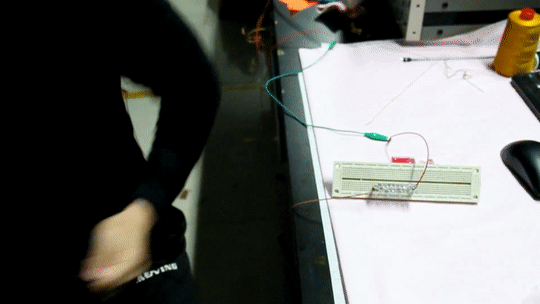Advertisement
Grab your lab coat. Let's get started
Welcome!
Welcome!
Create an account below to get 6 C&EN articles per month, receive newsletters and more - all free.
It seems this is your first time logging in online. Please enter the following information to continue.
As an ACS member you automatically get access to this site. All we need is few more details to create your reading experience.
Not you? Sign in with a different account.
Not you? Sign in with a different account.
ERROR 1
ERROR 1
ERROR 2
ERROR 2
ERROR 2
ERROR 2
ERROR 2
Password and Confirm password must match.
If you have an ACS member number, please enter it here so we can link this account to your membership. (optional)
ERROR 2
ACS values your privacy. By submitting your information, you are gaining access to C&EN and subscribing to our weekly newsletter. We use the information you provide to make your reading experience better, and we will never sell your data to third party members.
Materials
Spinning yarn for a wash-and-wear energy harvester
The yarn can be woven into textiles that scavenge energy from motion to charge wearable devices
by Katherine Bourzac
January 3, 2018


To Georgia Tech’s Zhong Lin Wang, even tossing and turning in bed is a possible source of renewable energy. Wang’s group has made energy-harvesting yarns—primarily composed of common garment materials like polyester, cotton, silk, and wool—that can be woven into brightly colored, washable, power-generating textiles (ACS Nano 2017, DOI: 10.1021/acsnano.7b07534). Sewn into socks, sweaters, and other clothes, the fabrics can harvest enough energy from the motion of walking the dog or waving your arms around to charge wearable medical sensors, smartwatches, or cell phones.
The yarn is based on a device Wang first developed in 2012 called a triboelectric generator, which takes advantage of static electricity that builds up from the friction between two different materials. The design is relatively simple, requiring a conductor (usually a metal) and a dielectric material (often a polymer), in close proximity. Dielectrics are insulators, but static charges can build up on their surfaces. When the two materials move closer together, electrons jump from the dielectric to the conductor. When they move back apart, those electrons flow into either a capacitor to store the charge or a circuit to generate power. These generators can harvest on the order of tens of milliwatts per square meter. That’s not a lot, but a triboelectric generator the size of a jacket could make 100 mW just from the wearer’s fidgeting—enough to power small sensors or to send a burst of data to receivers a few hundred meters away.
The rub is making a jacket that a person would actually want to wear. Research on energy-harvesting textiles sometimes ignores practical concerns such as breathability, the need of clothing designers to cut and sew it just like any other cloth, and the rigors of the washing machine, Wang says. He realized that he could make triboelectric yarn by covering a thin, flexible stainless steel fiber about 50 µm in diameter with a material like polyester or cotton. On the outside of the yarn, “we can substitute any material as long as it’s an insulator,” says Wang.
Wang’s group used machinery from the textile industry to wrap the steel with fibers and to weave the resulting yarn into textiles. These “power cloths” can generate electricity in two ways, he says. As the yarns are stretched and released, the outer insulating layer moves closer to the steel core, then away again, generating a small electrical current. Current is also generated when two layers of cloth—such as the sleeve and body of a sweater—rub against each other. This energy can be captured by a capacitor on the textile or sent over an attached wire to another device.
To test the power-generating potential of these textiles, the researchers sewed a small patch of power cloth made with stretchy Spandex into the sole of a sock and another into the underarm of a sweater. The sock could charge a capacitor to 1 V after about 19 seconds of walking. The cloth works at up to 90% humidity, so it can survive heavy sweating. It also withstood 120 cycles in the washing machine—but it’s line-dry only.

“This remarkable advance seems poised for practical applications,” says Ray H. Baughman, a materials scientist at the University of Texas, Dallas. Baughman is working on carbon nanotube yarns that can harvest large amounts of power from much larger sources, like ocean waves. Many researchers are racing to develop wearable, energy-harvesting textiles, he says.
Wang says he’s in contact with industrial partners about commercializing the power cloth for athletic apparel and to charge wearable health monitors.


Join the conversation
Contact the reporter
Submit a Letter to the Editor for publication
Engage with us on Twitter